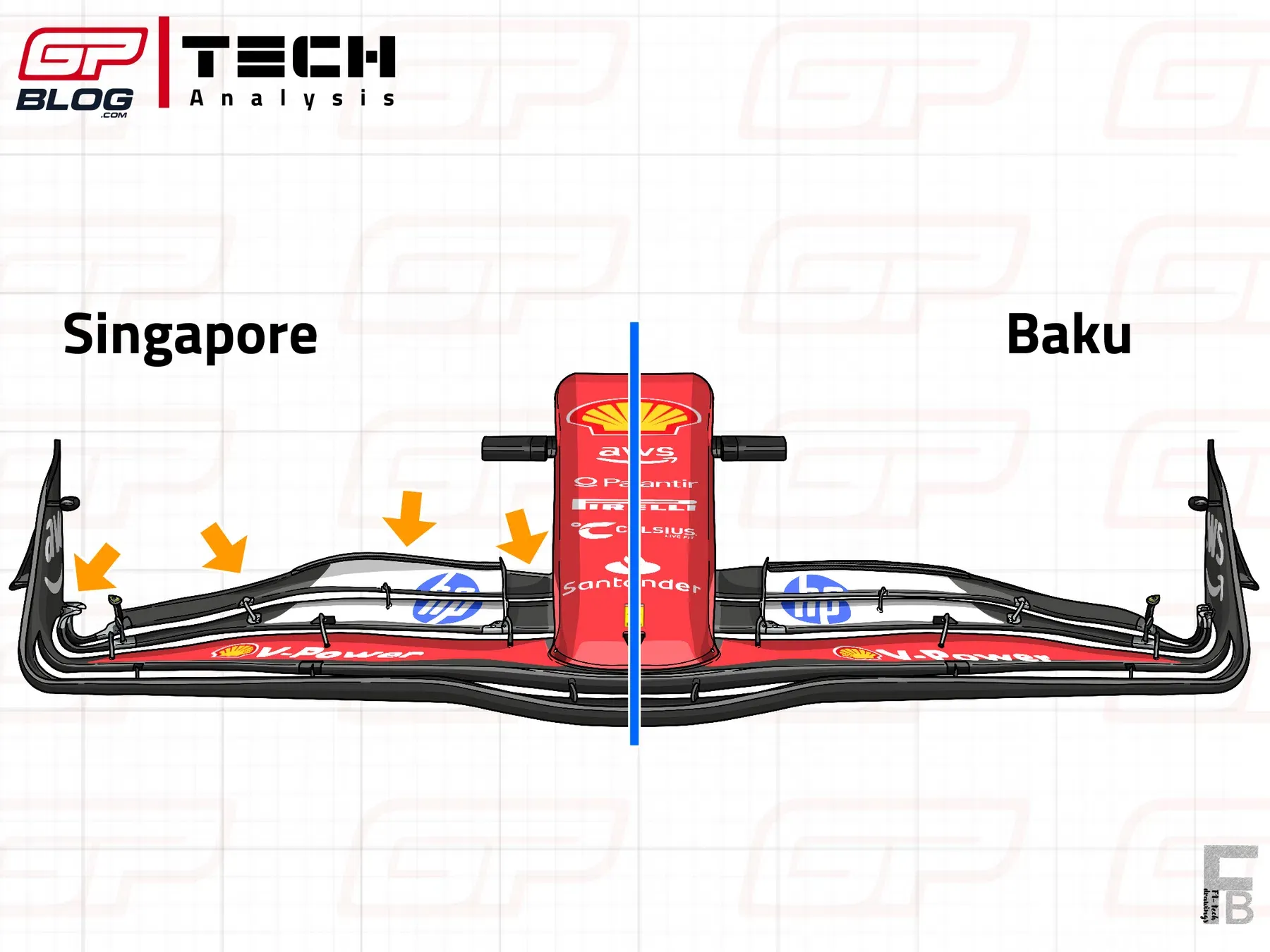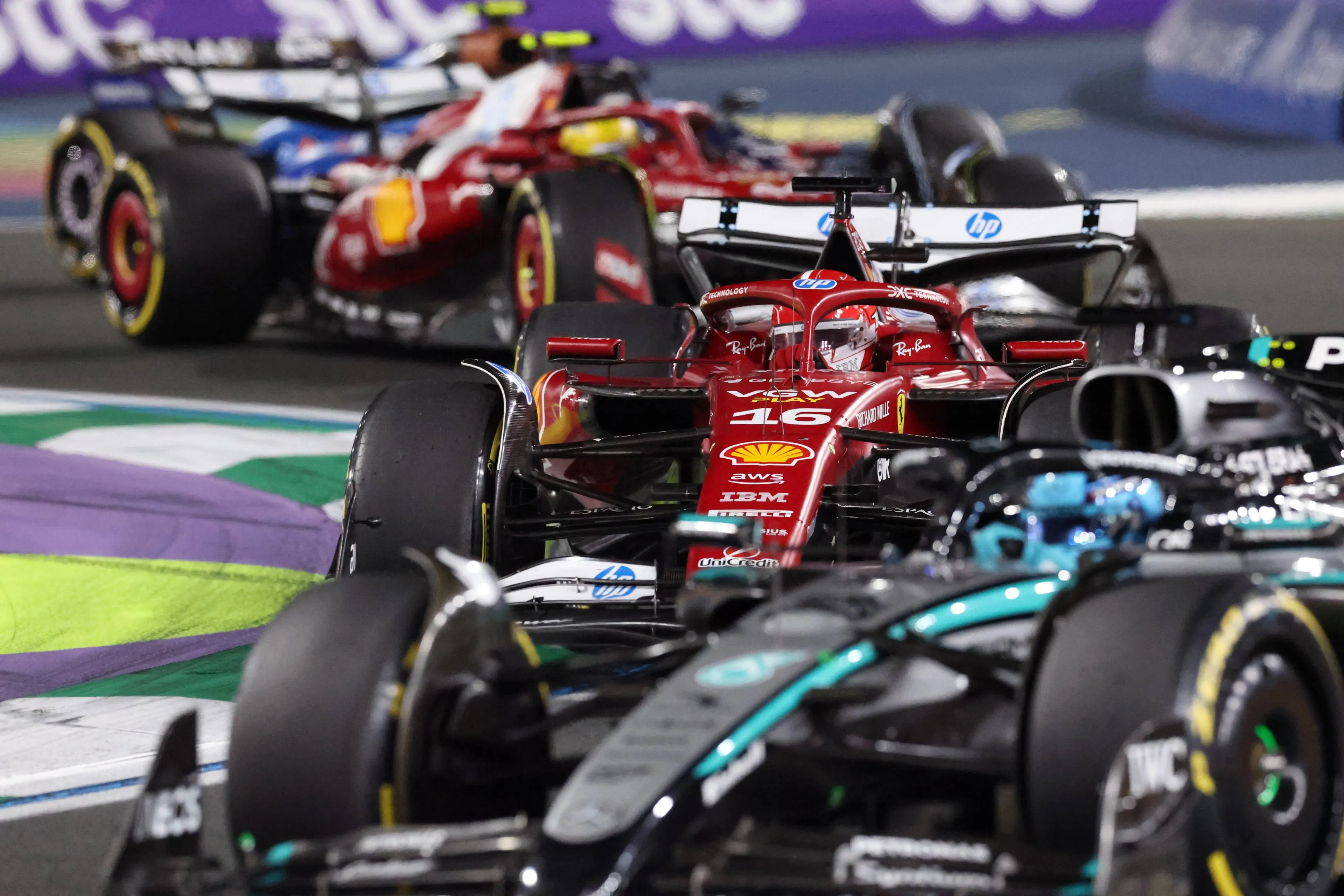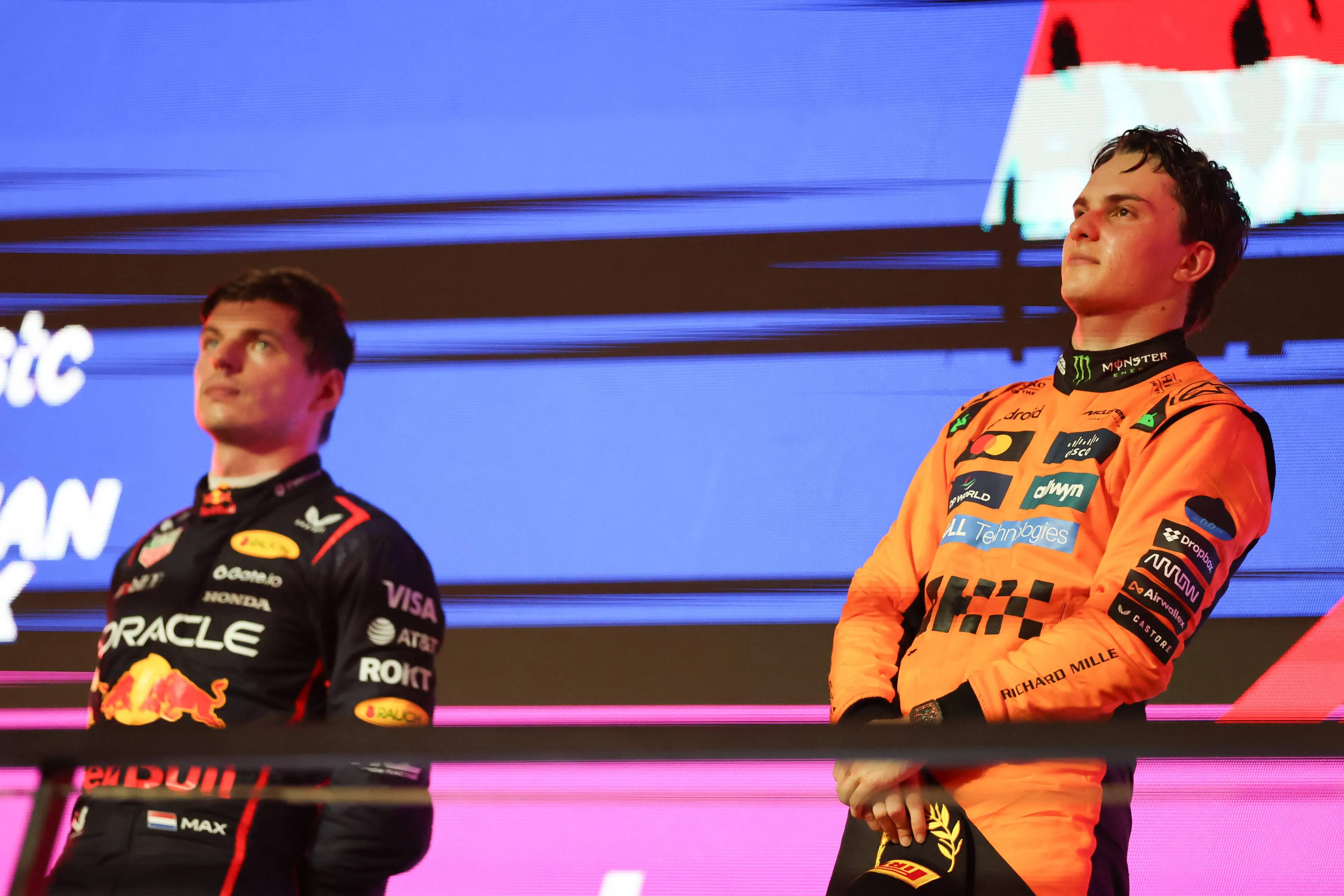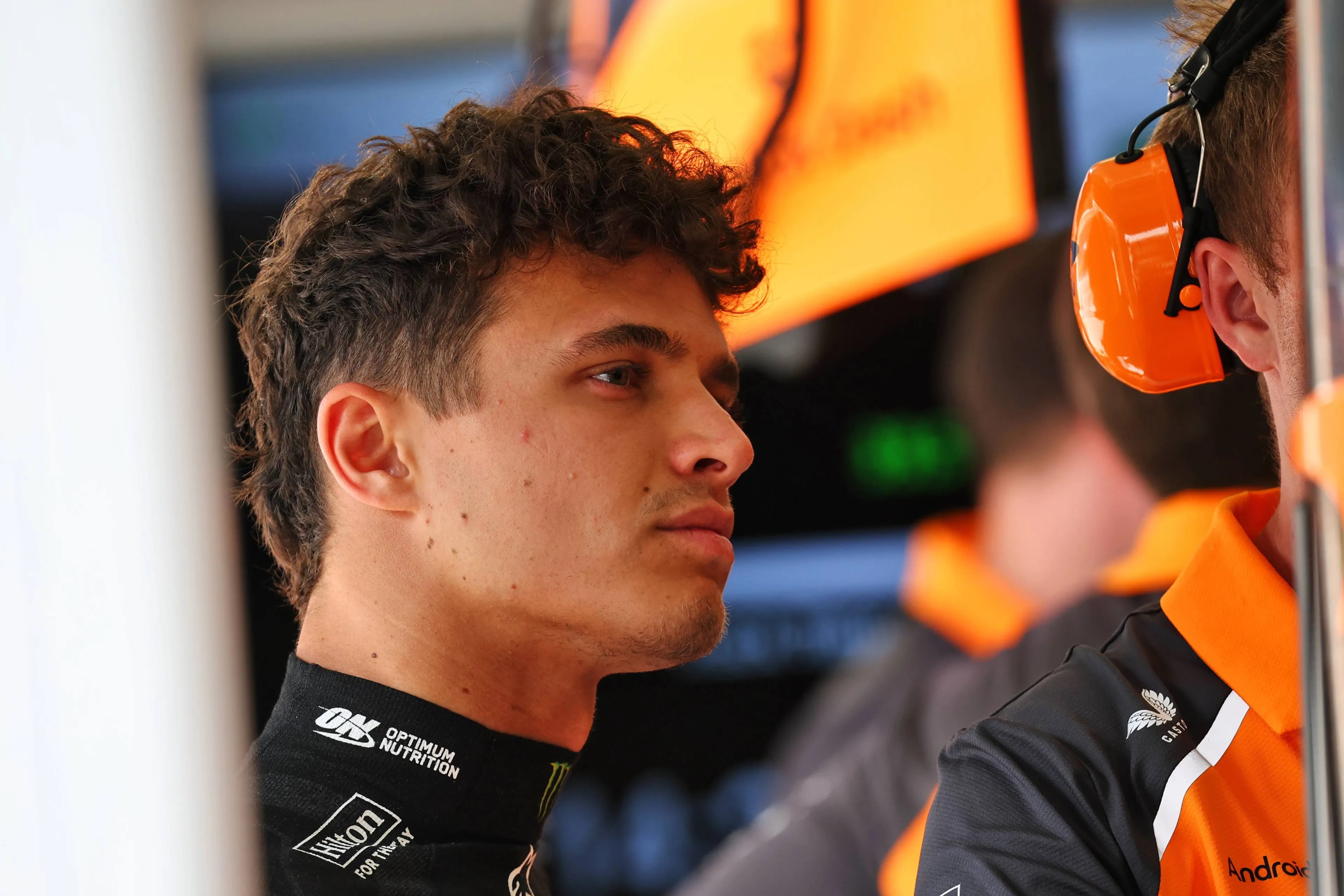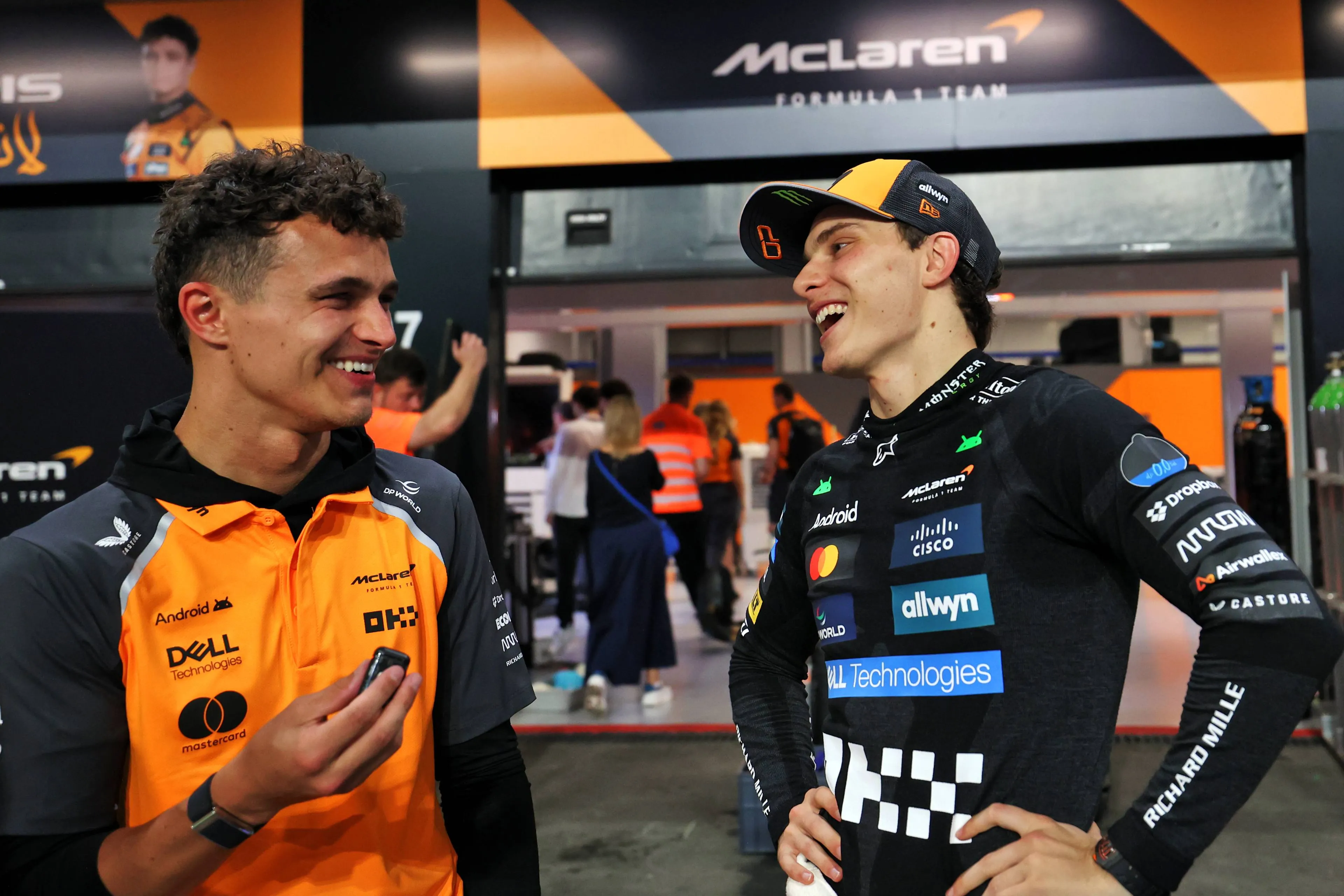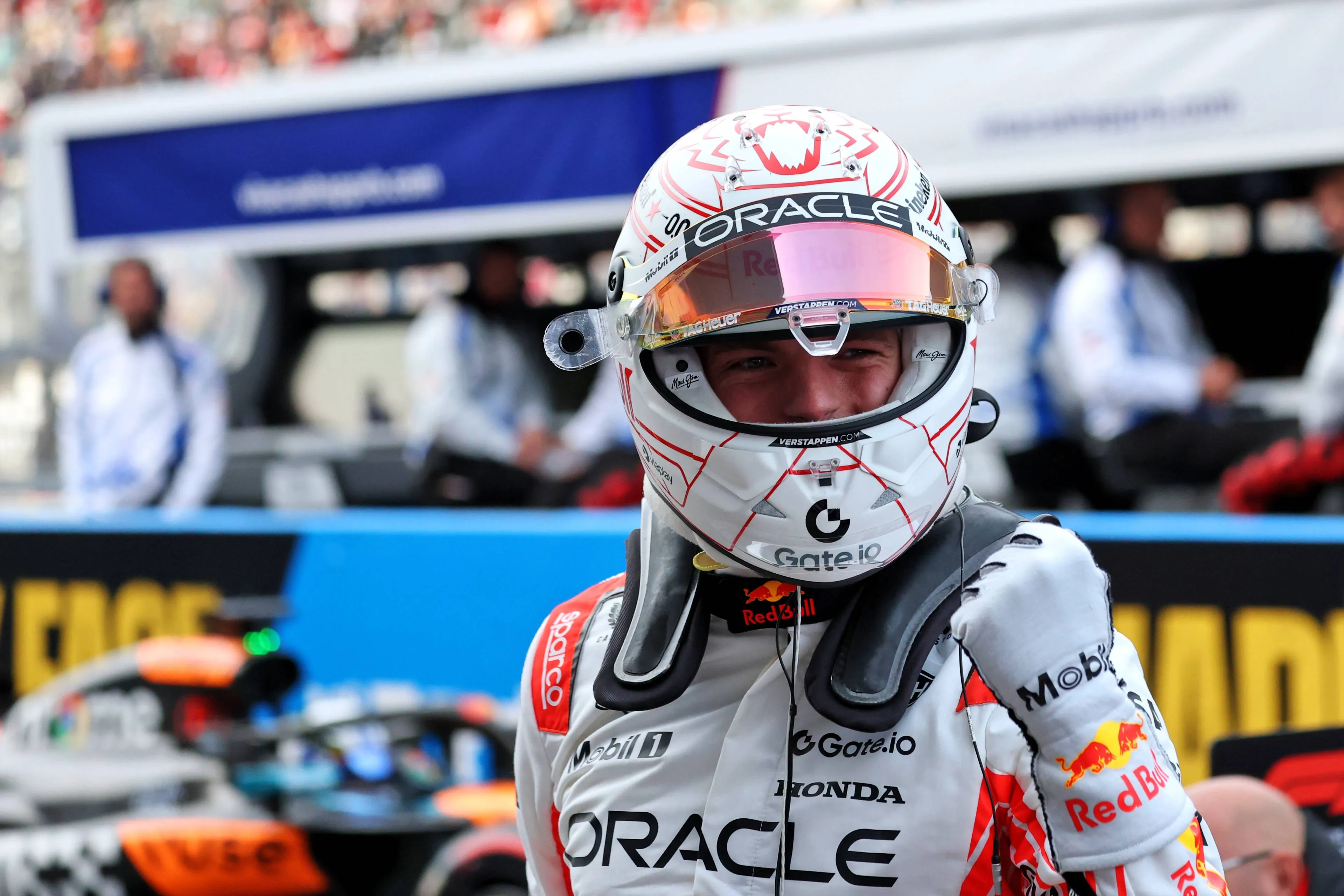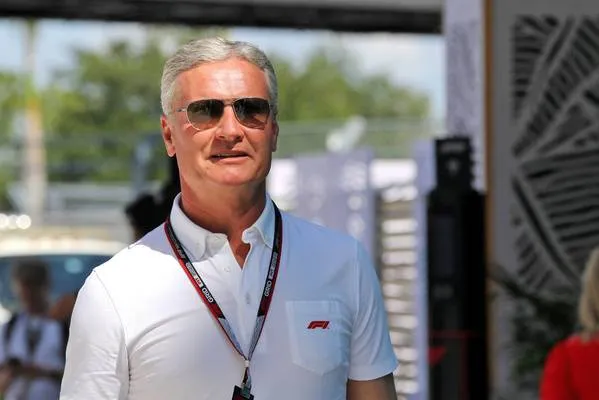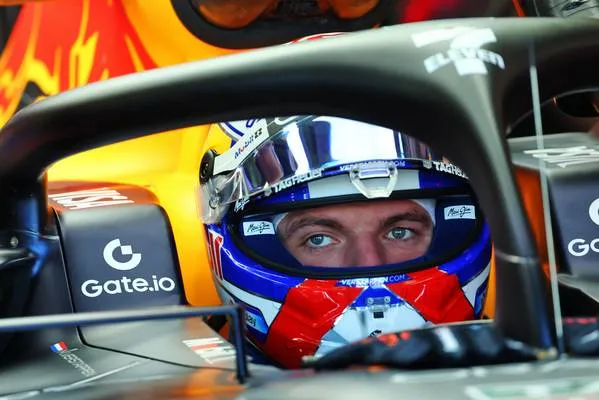After a dominant weekend in Austin, where Ferrari managed to score the first 1-2 since Australia, the Scuderia arrived in Mexico with high hopes, conscious that the slow and twisty layout of the Mexican circuit should have perfectly suited the SF-24. The great balance of the car, matched with a spectacular drive from Carlos Sainz allowed Ferrari to dominate both in qualifying and in the race, rekindling the hopes for the Constructors' title.
The SF-24: the perfect car in all medium-slow speed sections
Since the last big upgrade package was introduced in Monza, the SF-24 has made tremendous steps forward in terms of performance both in qualifying and in the race.
The new floor, revised in both the floor edge and the diffuser section (as explained here) opened up more set-up options, allowing the engineers to run the car at lower ride heights without facing porposing or bouncing issues. In fact, especially the new diffuser layout, with a tail end of the boat section, helped stabilise the flow in that area at lower riding heights, generating less peak downforce than the previous version but offering a more linear amount of load through different heights from the ground.


After this big package increased the amount of downforce generated by the bodywork and rear of the car, Ferrari also introduced a new front wing in Singapore, to move the centre of pressure a bit forward. The new wing, which was characterised by more flexible materials, was the cherry on the cake that made the SF-24 equalled with the MCL38 in race pace on average circuits.

These new bits had a very good impact on the behaviour of the SF-24: already since Monza, it was possible to appreciate how quicker the car was not only in the medium-slow speed, but also how close it got to the performance of the MCL38 and RB20 in the high speed. In fact, the updates gave the engineers the chance to run the car lower to the ground and with a softer mechanical set-up on those circuits where it was important to attack kerbs (like Mexico and Singapore).
This said, the SF-24 still has an evident weakness compared to the MCL38: the management of the softest compound in qualifying. During the single lap simulations, in fact, the red rubber deforms too much on the SF-24 in the high speed, making the car unstable in those sections, as it was possible to appreciate during qualifying both in Austin and Mexico (especially on Leclerc’s side). This factor, matched with the difficulty to warm up the tyres during qualifying in cold conditions and on slippery asphalts, make the SF-24 still a step behind McLaren on qualifying performance.
However, the true value of the SF-24 really emerged during the last few rounds: the car was extremely balanced and quick since FP1 basically since Monza, showing a strong performance across very different layouts.
Also last weekend in Mexico, Ferrari’s strength came out during the race, when the softer set-up made the car extremely fast on the medium tyre with high fuel, allowing Sainz and Leclerc to open up quite a big gap over Norris in P3. The softer mechanical set-up, in fact, made the car extremely competitive in the first and last sector, characterised by very slow speed corners and by the need to attack and jump on kerbs. From this point of view, the SF-24 was the best car of the grid this weekend, as it was able to absorb the bumps of the asphalt without losing any time.

The aspect was also underlined by Sainz after Saturday’s pole position, in the usual post qualifying interviews: “I think the upgrades are helping for sure. I think the circuit characteristic is a very important factor. I don't expect to be on pole in Qatar, just given how weak we are in high-speed. But in the low-speed, how tight the corners are, and how good we are in kerbing around Mexico, I said that we had a good chance and it's been like that.”
His words still, however, underline another area where Ferrari is a step behind McLaren: the performance in the high speed corners. As the Spaniard pointed out and as it was possible to appreciate both during qualifying and the race (especially on the hard tyre), the MCL38 was absolutely stunning in the middle sector of the Autodromo Hermanos Rodriguez. The great stability of the car, matched with a huge amount of downforce generated by the bodywork and the new floor, made the papaya car extremely quick through the sequence of medium-fast corners in the middle sector, allowing Norris to recover time on the two Ferraris.
Can Ferrari be a concrete threat for the Constructors’ Championship?
If the Maranello team can keep up with the recent performances, the answer is absolutely yes. Thanks to the great performance both in Austin and Mexico, Ferrari managed to overcome Red Bull for the 2nd place in the Constructors’ Championship, also because the Milton Keynes team is currently relying only on Max Verstappen’s results.
It’s however important to acknowledge that during the last couple of weekends Piastri’s performance didn't match Norris (especially this weekend, as he was eliminated in Q1) and this had quite a big impact on the actual Constructors’ Championship standings.
This said, Ferrari have proved to have all the cards to play for something big in the last four races of the season, even though 2 of the remaining tracks should be not ideal for the SF-24: Interlagos and Qatar, due to the long corners and high speed sections, which still put too much stress on the soft tyres in qualifying.
However, Ferrari can still perform very good in the race on those layouts (especially in Brazil), even though it’ll be crucial to qualify in the first two/three rows of the grid to be then able to compete for the win and for the podium.
In conclusion, the Scuderia performance after the summer break has been exceptional especially on race pace terms and, if the team can keep this trend alive for the remains races, they could clearly become the 2024 Constructors’ Champions.
Read more about:
Popular on GPBlog

1
Vettel 'not allowed' to make F1 return: 'It's beautiful'
3210 times read

2
Russell claims he 'could have had two world championships' had he joined Hamilton at Mercedes earlier
888 times read
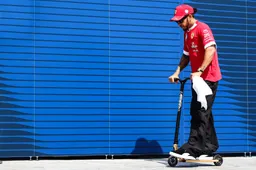
3
Brundle notices these worrying Hamilton traits in Ferrari data: 'It's always the same'
879 times read

4
Hamilton finds himself once again in a 'similar situation to what it was at Mercedes'
655 times read
